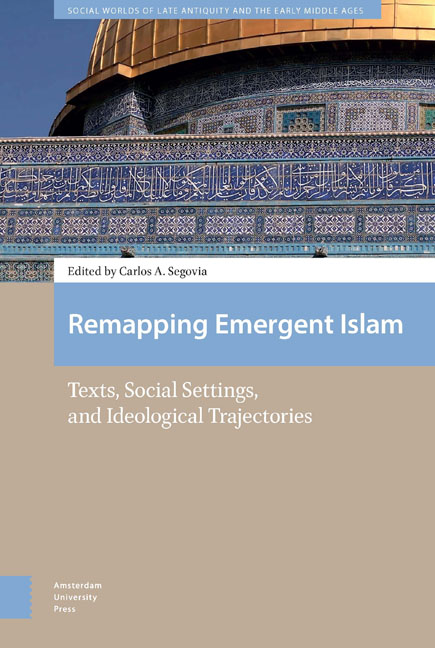Book contents
- Frontmatter
- Contents
- Introduction
- Part 1 Re-Assessing the Hypothesis of a Peripheral Jewish Background
- Part 2 An Encrypted Manichaean / Messalian Matrix?
- Part 3 Measuring the World’s Timeline… and Imagining the Afterlife at the Persian Court?
- Part 4 Conceptual Quicksand, Meta-Narratives of Identity, Texts and their Marginalia
3 - The Astral Messenger, The Lunar Revelation, The Solar Salvation: Dualist Cosmic Soteriology in The Early Qur’ān
Published online by Cambridge University Press: 24 November 2020
- Frontmatter
- Contents
- Introduction
- Part 1 Re-Assessing the Hypothesis of a Peripheral Jewish Background
- Part 2 An Encrypted Manichaean / Messalian Matrix?
- Part 3 Measuring the World’s Timeline… and Imagining the Afterlife at the Persian Court?
- Part 4 Conceptual Quicksand, Meta-Narratives of Identity, Texts and their Marginalia
Summary
Abstract
Daniel A. Beck interprets the cosmological imagery of several archaic quranic passages, with special attention to their depiction of the moon as an eschatological sign and soteriological mechanism. The parallel celestial messenger's oaths embody Manichaean cosmological concepts, in which the sun and moon were the primary cosmic vehicles of redemption during our human era. By comparing archaic quranic cosmology, ancient North Arabian devotional epigraphy, and Manichaean cosmology, he suggests that the divine speaker's oaths were discontinuous with Old Arabic pagan devotional structures, and were instead closely related to contemporary forms of late antique Manichaean eschatology.
Keywords: Late Antiquity, Early Islam, Manichaeism, Ancient Cosmology
The famous ‘split moon’ reference opens sūrat al-qamar, the surah of the moon. Q 54:1 proclaims iqtarabati al-sā‘at wa-nšaqqa al-qamar, meaning ‘the Hour has come near and the moon has split’. Q 54:2–3 follows by asserting ‘and if they see a sign (yaraw āyatan), they turn away and say “magic continuing”. And they denied and followed their desires. But for every matter (amrin) will be a settlement.’ Q 54:4 then states that the people have received ‘the news’, al-anbā, which has deterrence, muzdağar. Islamic exegesis interprets the split moon of Q 54:1 as a temporary visible miracle, which appeared during Muhammad’s early Meccan ministry, but which his opponents derogated as mere magic. This miracle is said to have consisted of the moon being temporarily split into two halves, which the Meccans witnessed in their night sky. ‘The deterring news’ of Q 54:4 is presumed to be ‘the Qur’ān’, understood as a unified verbal revelation that the prophet alone received and transmitted to the pagan Quraysh.
That traditional reading has many problems. Distinguishing prior prophets, the Qur’ān normally defends Muhammad against his community’s charge that he did not deliver visible miracles. And the claim that the moon had been visibly split into two is implausible as a real-world proclamation. Traditional exegesis treats the addressees of Q 54 as agreeing that they had witnessed an astounding cosmic sight, although nobody within the Hijaz or outside it would, in historical reality, have seen the moon split into two halves.
- Type
- Chapter
- Information
- Remapping Emergent IslamTexts, Social Settings, and Ideological Trajectories, pp. 85 - 110Publisher: Amsterdam University PressPrint publication year: 2020



